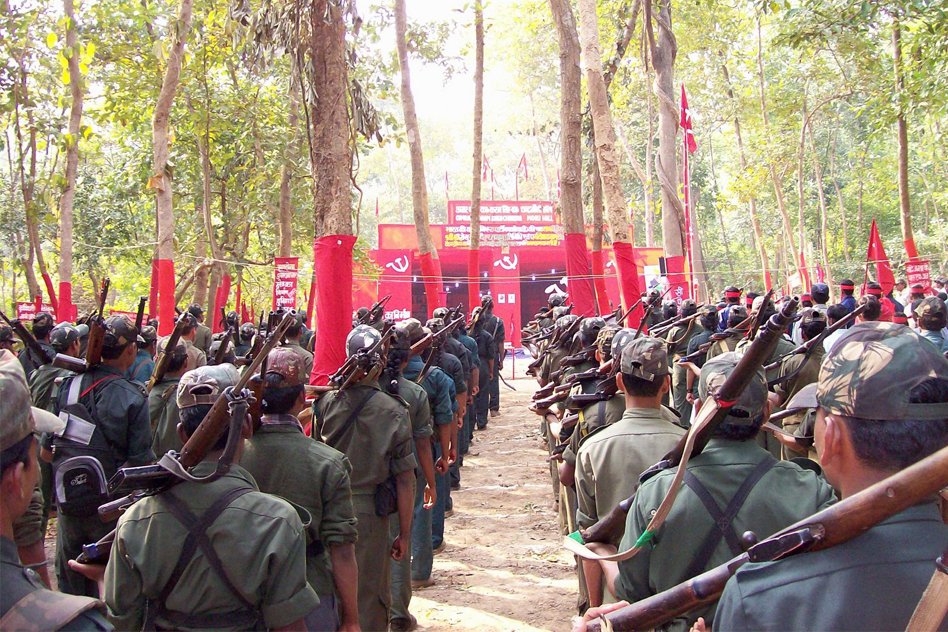
Image Courtesy: NaxalRevolution
All You Need To Know About The Origins Of Naxalism
24 May 2017 6:52 AM GMT
50 years ago, in 1967, the Naxal Movement came into being in a small village called Naxalbari in northern West Bengal, located in the strategic Siliguri corridor.
Naxalism is a serious issue which has cost many precious lives including that of many CRPF personnel, politicians and many others due to guerilla attacks.
- What are the origins of Naxalism?
- Why are they pursuing whatever they are pursuing? What is their end goal?
- What was the role of the British in the genesis of Naxal Movement?
- Is there a solution to the issue of Naxalism?
Let us look into the answers to these questions and evaluate if Naxalism as an issue can be solved.
Origins of Naxalism
The term “Naxalites” comes from Naxalbari, a small village in West Bengal where a section of the Communist Party of India (Marxist) (CPI-M) led by Charu Majumdar, Kanu Sanyal, and Jangal Santhal initiated a violent uprising in 1967.
Why are the Naxals’ ambitions?
- Chinese communist ideologue and leader Mao Zedong provided ideological leadership for the Naxalbari movement, advocating that Indian peasants and lower class tribals overthrow the government and upper classes by force.
- A large number of urban elites were also attracted to the ideology.
- The objective of their fight was a redistribution of land to working peasants, which was controlled by landlords for generations.
- Oppressed population, including tribes and rural Dalits, wanted their share of land which was denied to them for generations.
- To achieve the same, the Naxals, or the Maoists as they are also known, engaged in a violent uprising against security forces.
What was the role of the British in the genesis of the Naxal movement?
The Permanent Settlement revenue system introduced by the Britishers once the East India Company established its rule in West Bengal, a large number of zamindars/landlords were created who owned large tracts of land but were hardly involved in the cultivation of crops and agricultural activities themselves. They instead employed a large number of labourers, who would be paid a pittance because in most cases the sharecropper would hardly get much of the total agricultural produce from the land, and whose own tenure was not secure. Moreover, the sharecropper could be evicted at any moment from the land, because he/she did not own the land. This happened both under the Britishers and continued once India became independent.
To add to their woes, there were frequent complaints of women being molested and even raped by landlords or relatives/family members of landlords. Another issue was that the sharecroppers had to take loans from landlords at exorbitant rates of interest and forgery had been done in many cases so as to ensure that sharecroppers were always in debt and were thus hardly getting any share of the total agricultural produce, which almost always went entirely to the landlord.
In short, the redistribution of agricultural land equally among all those engaged in agricultural production, particularly among the landless was the primary motive of the Naxal movement.
However, Naxal extremism has led to the death of thousands of civilians and security personnel in the country. Over time, the government declared the CPI (Maoist) as a terrorist organisation. They have claimed the lives of thousands every year, with the movement most concentrated in rural areas and tribal regions and in particular in states like Chhatisgarh and Jharkhand.
Is there a solution to the issue of Naxalism?
Social welfare schemes like MGNREGA and other state-centred schemes have had a calming effect on Naxalism as evident in Madhya Pradesh and Karnataka, where Naxal problems have come down in the backdrop of well implemented social welfare schemes. The fifth and the sixth schedules of the Constitution, which protect the rights of tribals over their property, also have played its part. Forceful eviction and mining, which eventually had cost the livelihood and the chance to live in their natural homes quite often and been an engine for Naxalism to thrive in.
Good social policies, social reforms, land and agricultural reforms altogether if implemented well could bring about a natural end to the problem of Naxalism without the necessity for violence. However, the large number of attacks on the CRPF personnel has resulted in the breakdown of any form of discussion and debate besides fuelling the lack of trust.
 All section
All section













